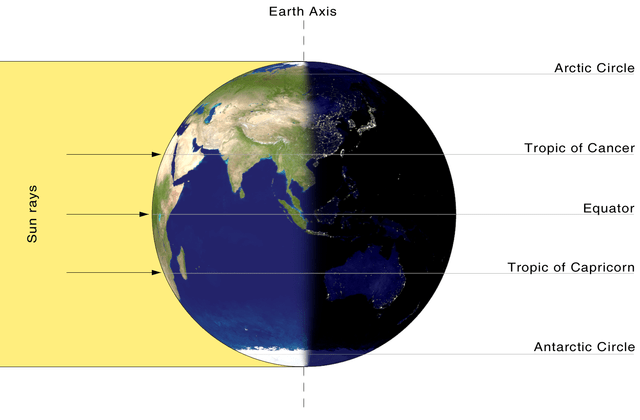
How did you enjoy your harvest moon, haijin? Thank you for celebrating the 2nd anniversary of the #Haikai Challenge; congratulations to last week’s contributors:
Haikai Challenge Participants| 1. Dwight L. Roth 2. Reena Saxena 3. Jane Dougherty 4. Tessa 5. Revived Writer | 6. Janice 7. Xenia Tran 8. Jules 9. Ken Gierke / rivrvlogr 10. Linda Lee Lyberg | 11. Kerfe Roig 12. Pat R 13. Deborah |
Powered by… Mister Linky’s Magical Widgets.
Onward!
This is the last weekend of summer in the northern hemisphere (and winter in the southern). This monday, the September equinox is upon us:
The September equinox (or Southward equinox) is the moment when the Sun appears to cross the celestial equator, heading southward. Due to differences between the calendar year and the tropical year, the September equinox can occur at any time from September 21 to 24.
At the equinox, the Sun as viewed from the Equator rises due east and sets due west. Before the Southward equinox, the Sun rises and sets more northerly, and afterwards, it rises and sets more southerly.
The equinox may be taken to mark the end of summer and the beginning of autumn (autumnal equinox) in the Northern Hemisphere, while marking the end of winter and the start of spring (vernal equinox) in the Southern Hemisphere.[3]
Fun Fact: This equinox is a holiday in Japan:
When is Autumnal Equinox Day?
On September 22, 23 or 24, the Autumnal Equinox is celebrated as a national holiday in Japan.
In Japan, this holiday is known as ‘Shūbun-no-hi’. The exact day can vary due to astronomical observations, so the date for the following year is usually announced in early spring.
History of Autumnal Equinox Day?
The sun rises exactly on the east and sets exactly in the west on this day, making day and night equal in length.
From this day forward, the days will begin to become shorter than nights in the Northern hemisphere.
Autumnal Equinox Day was established as a national holiday in 1948. Before then, the autumnal equinox was an imperial ancestor worship festival called ‘Shūki kōrei-sai’ and the holiday had its roots in Shinto traditions as a time to give thanks to the deities for a successful harvest.
The equinoxes are also a special time for Buddhists who traditionally see them as days when the border between the worlds of the living and the dead is at its thinnest, making the equinoxes important days to honour ancestors and remember the dead.
The Japanese use Autumnal Equinox Day to pay respects to deceased family members, visit family graves and hold family reunions in honour of those who have passed.
This week, write the haikai poem of your choice (haiku, senryu, haibun, tanka, haiga, renga, etc.) that alludes to the September Equinox (Tsuki Shunbun)
As always:
Here’s how the challenge works:
1. write the haikai poem of your choice.
2. post the link of your post to Mister Linky.
3. pingback by posting the link to the challenge on your site.
4. read and comment on other contributors’ posts.
Enjoy the coming Autumn/Spring, haijin!

Leave a comment